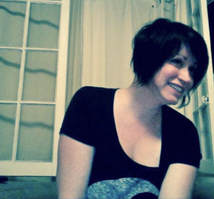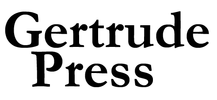|
My life narrative took a turn when I was twenty-one—I moved away from the Midwestern state I was raised in and away from the family who raised me there. It was surprisingly simple: I worked two jobs to save about a thousand dollars, shoved a bunch of wrinkled clothes and yet-to-be-read novels into my Nissan, and drove—western bound.
“Out West” was more of an ideology to me than an actual physical place. Not knowing, or really even caring, where precisely I would land in this magical place of milk and honey, I simply knew I had to go. I believed then that the reason I had to leave was to find myself. Cliché, yes, but that was the script I had been told by television and books and peers. And that’s the script I’d carry with me for years. Reading Martha K. Davis’s Scissors, Paper, Stone helped me do some much-appreciated mental re-scripting. This book helped me realize I left home not because I was in search of some metaphysical hidden self—I left to find a new kind of kinship. Davis’s debut novel, Scissors, Paper, Stone, delivers intergenerational, women-centered narratives that illustrate how close personal connections can be realized in wonderfully idiosyncratic ways. Each of these stories is told in first-person, giving readers intimate access to the outward and inward experiences of three women. Catherine’s, Min’s, and Laura’s narratives are told in graceful, though not overly flowery, prose. These characters are dynamic; their spoken and inner dialogues are believable; and their worlds are simultaneously distinct and relatable. The sentence-level writing in the book makes it an enjoyable read, but it’s the overarching themes that make the novel especially compelling. The subject I find most pressing is how each storyline ruptures the construct of kinship. Catherine’s story troubles the idea that familial bonds necessarily be tethered by biological connection. Laura’s story illustrates an element of curation in family-building. And Min’s story demonstrates how tribes can be organized around desire, making way for a refreshing kind of queer kinship. Family is not bound by blood or race for The book introduces Catherine first. Her narrative begins in 1964. I immediately connected to Catherine because, like my own experience, she also leaves behind her childhood, birth family, and home to relocate on the Pacific Coast. She hopes that living in liberal San Francisco, thousands of miles away from her biological kin, will be enough to remove her from their evasive racism and furtive sexism—a special brand of bigotry that is carefully couched in conservative family values. It’s the kind of hate that is hidden from plain view, though is certainly no less toxic than the overt versions. However, when Catherine and her husband, Jonathan, adopt Min, a baby girl from Korea, Catherine’s family’s prejudices become increasingly more transparent and noxious.
When Catherine’s most beloved sibling, her brother Andy, comes to visit from the East Coast to meet Min, he rejects the baby because she’s not white. Opining to Catherine, Andy tells her, “You’re born into family, and family is born to you.” Catherine’s response, “Family is who you choose,” gives voice to the novel’s recurrent theme of stretching the boundaries of kinship. Family is not bound by blood or race for Catherine, and her narrative shows how your people must be chosen, not just once, but over and over again. Scissors, Paper, Stone reminds me to keep putting |
Readers are granted access to Min’s point of view, too. Her narrative begins in 1979. Davis gives Min an honest, borderline raw, voice. I fell in love with Min’s tellings. I enjoyed relating to her sexual angst and valued learning from her experiences of being marginalized. As a Korean-born-American lesbian, her sense of belonging is fundamentally complicated. Her character animates how identities are not so much hyphenated as they are the result of a sophisticated web of intersections, and it is in certain unexpected crossings of this web that Min finds and fosters personal connection—connections with friends and lovers that become familial-like. Following Min through her life shows the reader how family can be defined in ways that buck normalizing cultural logics—ways of thinking that rely on heterosexism, nationalism, and racism. Though it is Catherine’s story that first invites the reader to apply pressure to how kinships are fashioned, it is Min’s narrative that heralds an especially remarkable kind of reciprocity, one that is organized by desire: queer kinship..
These characters are dynamic; their Laura is Min’s central object of desire, and Scissors, Paper, Stone provides readers with Laura’s direct perspective as well. Her narrative begins in 1973. Laura is in the 5th grade when readers meet her—and this is when she and Min meet too. The two girls become fast comrades. As the novel progresses, they uncover and cover up various facets of friendship; though one consistent feature is that their friendship, “always contained an element of wooing.” Alright, the wooing does wane for a time, as the girls become young women and Laura makes the choice to be straight. Well, until she doesn’t. Much of Laura’s story is about how behaviors—like compulsory heterosexuality—are rendered as inherent. Like Laura explains, “I didn’t know any better. Those were the rules I’d learned.” But eventually she unlearns them, or maybe learns anew. In either case, Laura’s sexual desires fluctuate over time, like desires do (though rarely are they represented as doing so). With both Min’s and Laura’s narratives, Davis successfully illustrates the complexities that energize sexuality. Min finds power in naming her sexuality as connate, whereas Laura continually chooses and re-chooses hers. It’s destabilizing, and thankfully so.
The novel’s structure is one element I am a bit less thankful for. The structure is imbricated via Catherine’s, Min’s, and Laura’s life-stories, and it’s organized chronologically. The clear patterning of narratives and linear configuration of the novel make the structure neat and tidy, but, frankly, it also became a bit stale for me. The expected structure runs counter to the unexpected types of organization that Davis lays out for kinship. In other words, I wanted the book to demonstrate in its structure the kind of alterity it espoused—to show, not just to tell. That said, the way the book is structured is in no way a deal-breaker for me. I was, in fact, glad to be introduced and reintroduced to each of the alternating narratives, and the predictability factor did make me trust the book. We connected. Became like family by the end. When I left home, I left behind one family in order to discover different ones. It took lots of time and lots of reading, but eventually I came to recognize that my new families were no less legitimate than the one I was born with. Scissors, Paper, Stone reminds me to keep putting pressure on my own prejudices about what makes family, and it challenges me to keep rethinking desire. These are not easy tasks for a book to take on, but Davis’s novel rises to the occasion by pointing to the limitations of defining family by way of biology or ethnicity and by inviting the possibility for kinship to be realized in divergent, queer ways. |

REVIEWED BY JESS TRAVERS
Jess Travers teaches, researches, and writes about queer literature and gender and sexuality. Currently, she’s working on her doctoral dissertation, which considers how yesterday’s AIDS prose can inform today’s feminisms. Check her out at https://jessicatravers.com.
Jess Travers teaches, researches, and writes about queer literature and gender and sexuality. Currently, she’s working on her doctoral dissertation, which considers how yesterday’s AIDS prose can inform today’s feminisms. Check her out at https://jessicatravers.com.
